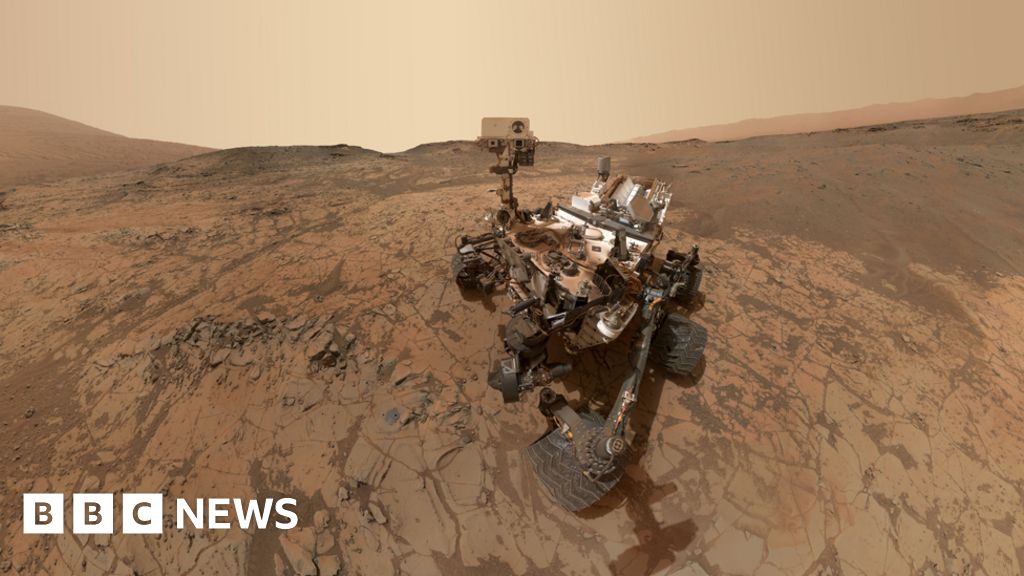
The American space agency's Mars rover Curiosity has recorded its largest measurement yet of methane.
The robot frequently "sniffs" the Red Planet for the gas but has never before seen so high a concentration - of 21 parts per billion (ppb).
The observations are fascinating because on Earth, methane is produced in large part by living things.
That's not necessarily the case on Mars; geological processes are very capable of making it as well.
Nonetheless, the latest data will heighten interest in the topic.
Through the course of its mission, Curiosity has noticed a number of spikes in methane, and it senses a background level that appears to have a seasonal pattern to it.
But although the robot's big onboard chemistry lab - the Sample Analysis at Mars (SAM) instrument - can detect the gas's presence, it can say nothing about the source.
"With our current measurements, we have no way of telling if the methane source is biology or geology, or even ancient or modern," said SAM Principal Investigator Paul Mahaffy from Nasa's Goddard Spaceflight Center in Greenbelt, Maryland.
The issue of methane at Mars is a little confusing at the moment, to say the least.
While Curiosity continues to measure some spikes, and one of these has been confirmed by the European Mars Express satellite in orbit at the planet - another spacecraft, supposedly with much better sensitivity, has seen nothing.
This probe, known as the Trace Gas Orbiter (TGO), started observing the the planet's atmosphere in April 2017. It should be able to detect methane at concentrations in the parts per trillion.
Quite why it cannot see what Curiosity sees is therefore a major puzzle.
One suggestion is that there is some kind of destruction mechanism that removes a methane spike in the lower atmosphere very rapidly - before the joint European-Russian TGO can get over Curiosity's operation site at Gale Crater.
But if this process exists, scientists are at a loss currently to explain it.
Nasa controllers commanded Curiosity to run a further air-sampling experiment over the weekend. The results were expected back on Earth on Monday.
For context, the concentration of methane in Earth's atmosphere is 1,865ppb. So the quantities at Mars, whatever their source, are still very small.
The primary emitters of methane on Earth are from wetlands, livestock, biomass and fossil-fuel burning, landfill and rice paddies.
The term "parts per billion by volume" (ppbv, or ppb for short) means that in a given volume of air, some billionths of that volume will constitute the gas of interest.
One of the geological processes that can produce methane is "serpentinisation", which yields the gas at the end of a chain of reactions when water comes into contact with certain rock minerals.
Dr Mahaffy's statement about historic methane is an important one, too. Even though Curiosity sees the gas today, it is quite possible the original source is ancient and is only now being released into the atmosphere, perhaps because some store below ground has become disturbed.
On Earth, methane can be held in ice under the seafloor or in permafrost regions on land for a very long time before it breaks out into the air.
https://www.bbc.com/news/science-environment-48743551
2019-06-24 08:29:15Z
52780319240802
Tidak ada komentar:
Posting Komentar